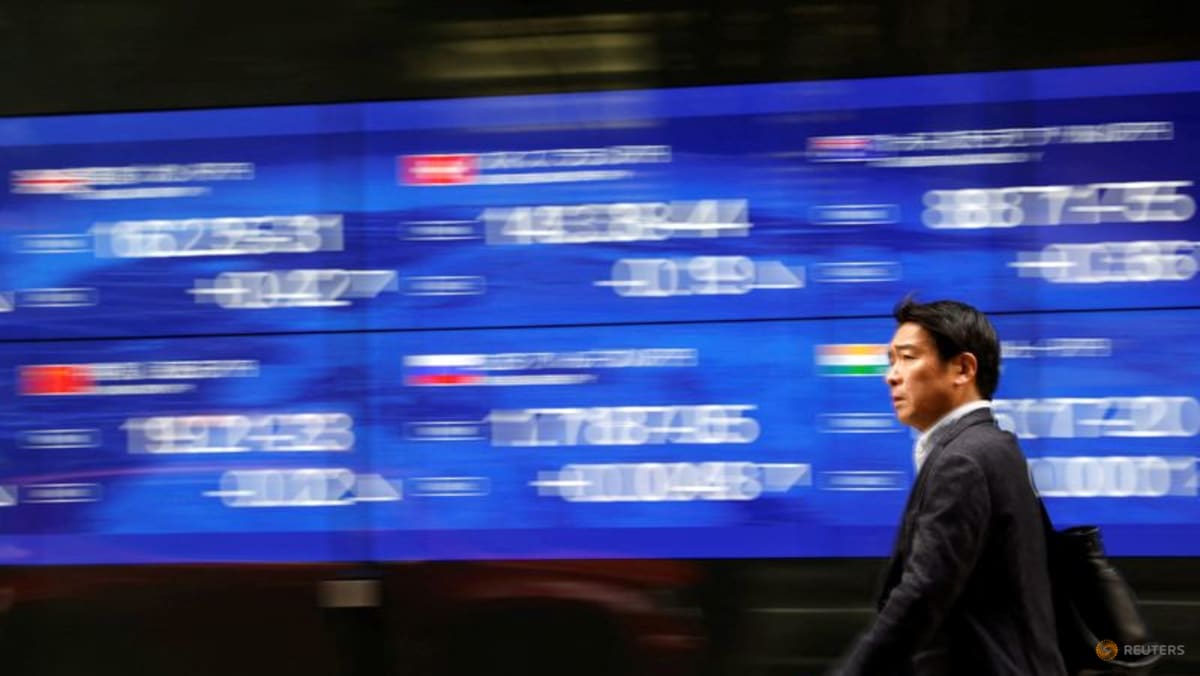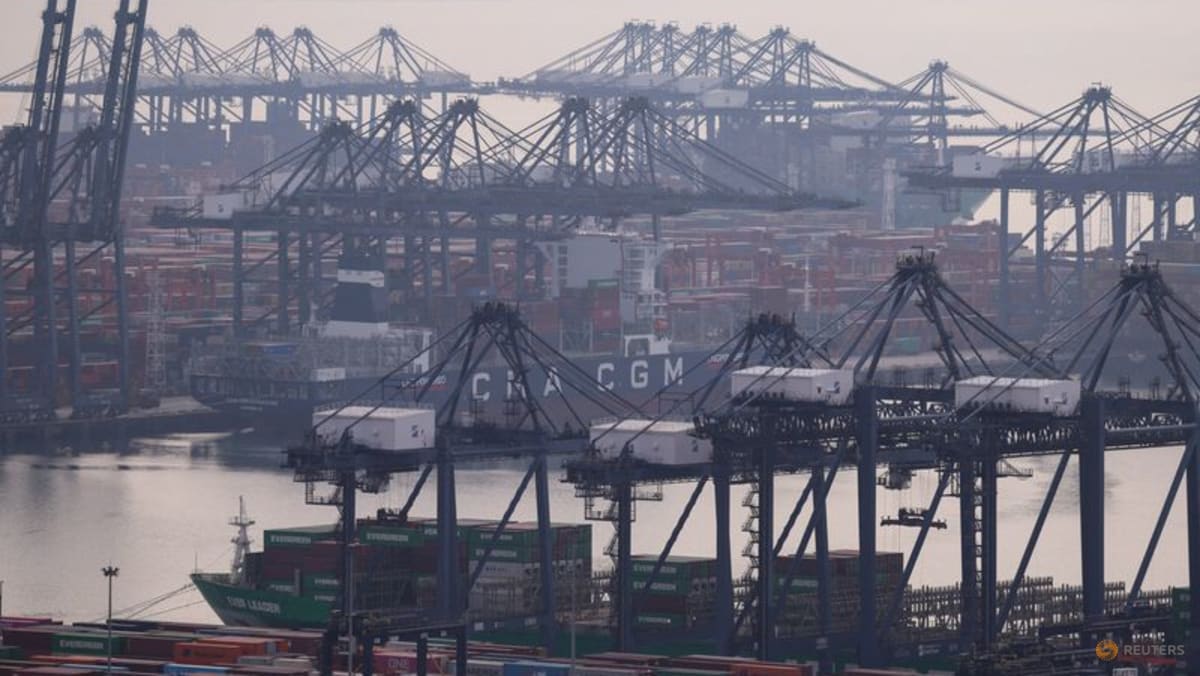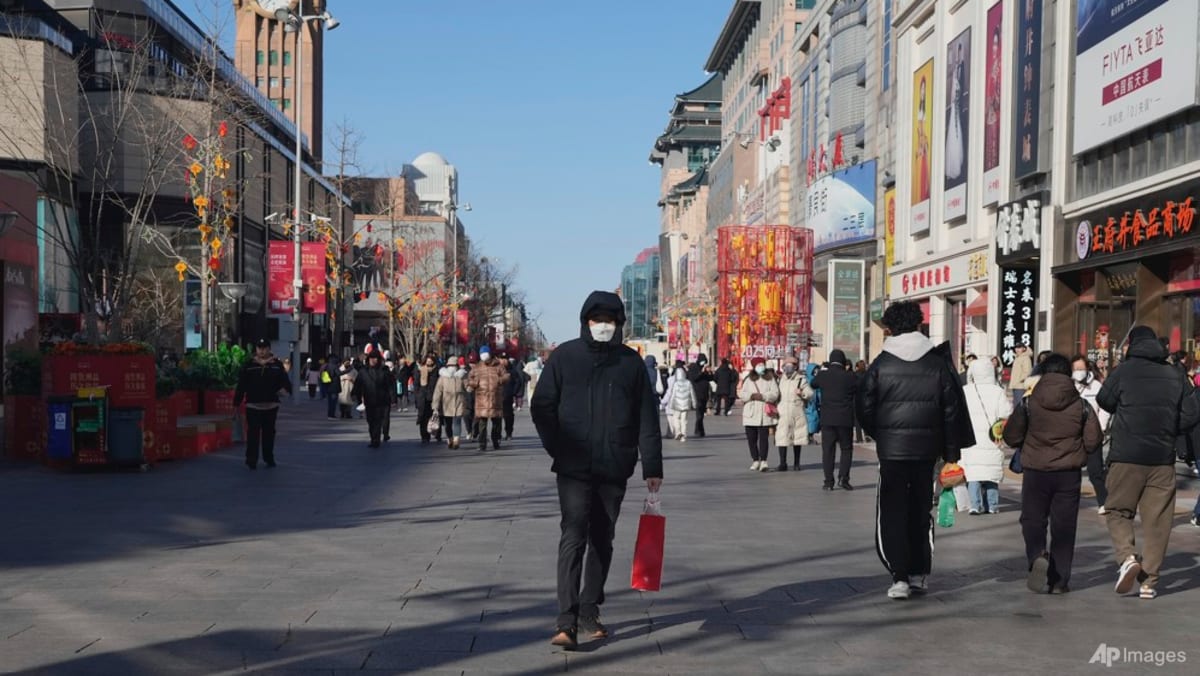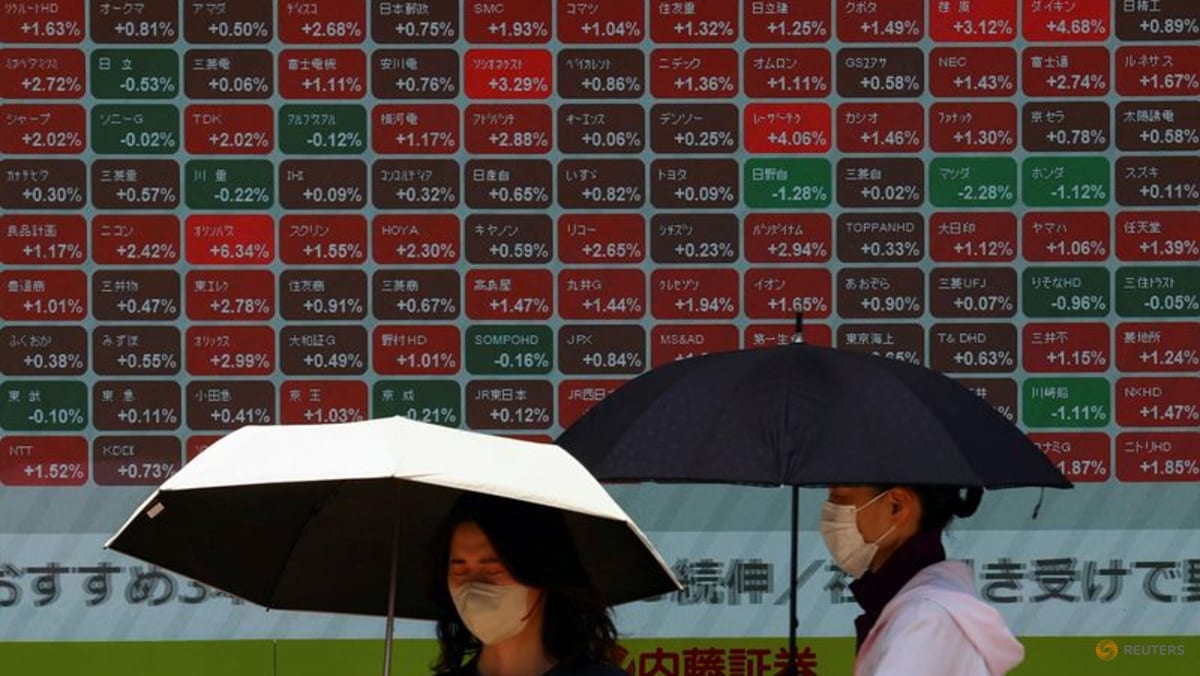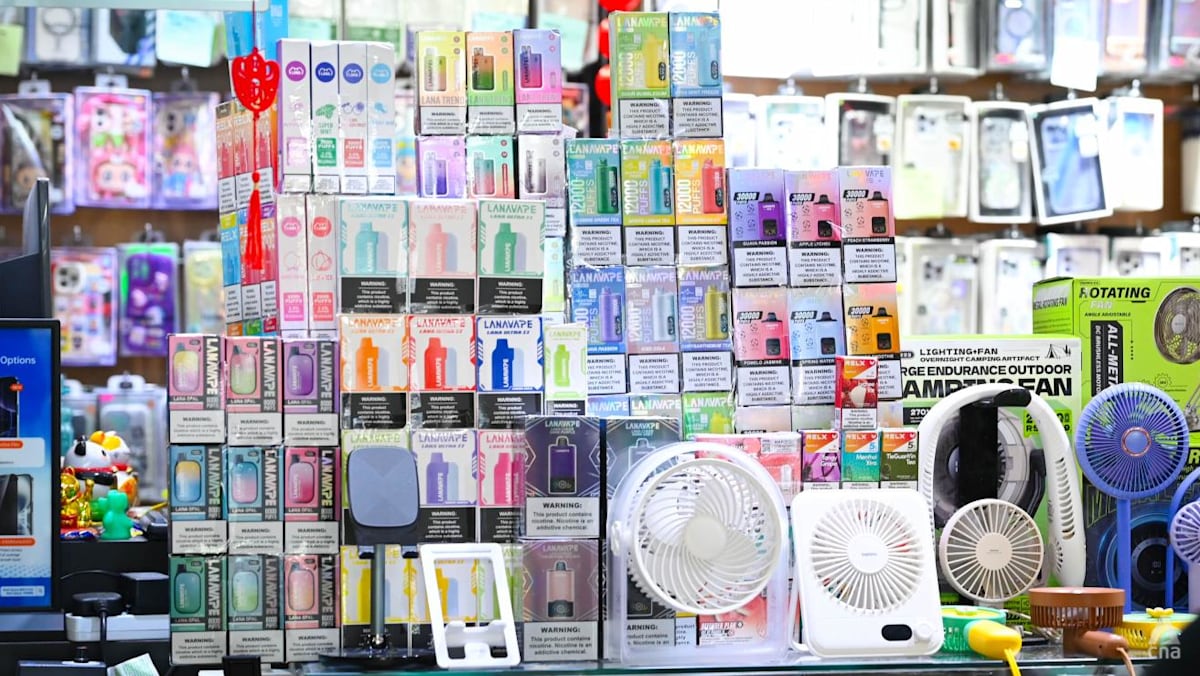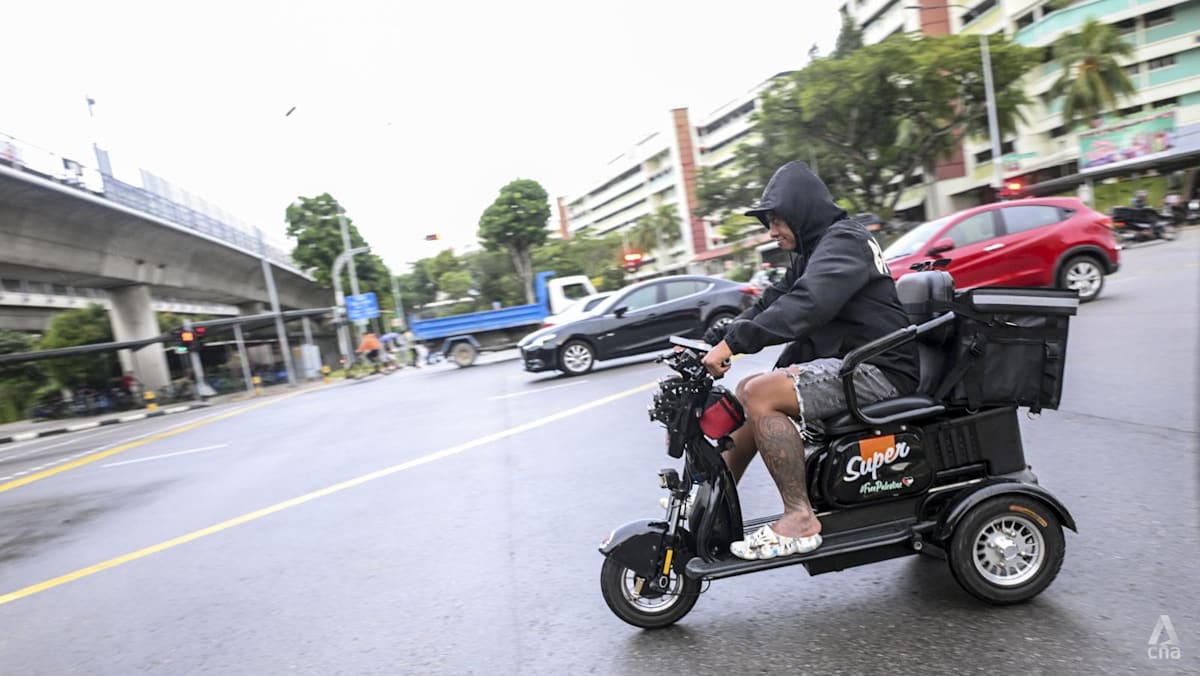KUALA LUMPUR: A threat by United States President Donald Trump to impose tariffs on semiconductor imports has cast a dark cloud over Penang, with experts saying it could derail a boom which has propelled the northern Malaysian state into a powerhouse in this essential technology sector.
Yet Penang’s Chief Minister Chow Kon Yeow is more upbeat, telling CNA that the state - as well as the country - remains in a “relatively competitive position” to draw investments.
Speaking at a White House dinner on Sep 4 with tech bosses, Trump said: “Chips and semiconductors - we will be putting tariffs on companies that aren't coming in. We will be putting a tariff very shortly."
He did not give an exact deadline or rate for the planned levy, but added: “We will be putting a very substantial tariff, not that high, but fairly substantial tariff with the understanding that if they come into the country, if they are coming in, building, planning to come in, there will not be a tariff."
While there has been no formal announcement of any sectoral tax on semiconductors by the US for now, the writing may be on the wall.
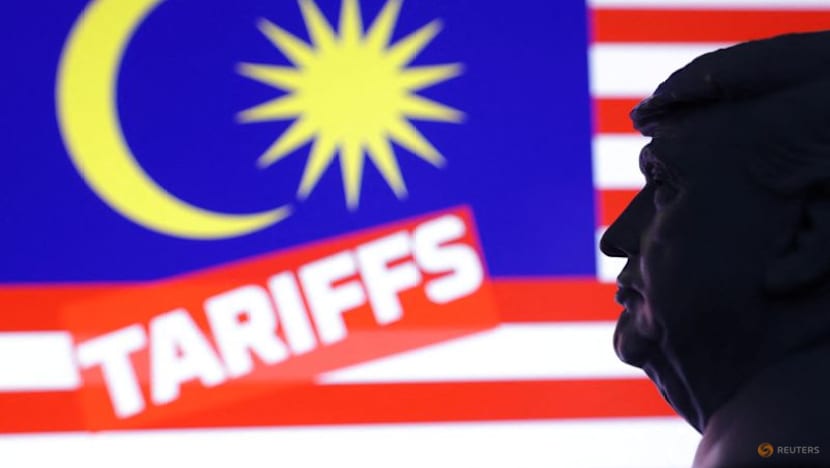 A file photo of a 3D-printed miniature model of US President Donald Trump, the Malaysia flag and the word "Tariffs" are seen in this illustration taken on Jul 23, 2025. (Illustration: Reuters/Dado Ruvic)
A file photo of a 3D-printed miniature model of US President Donald Trump, the Malaysia flag and the word "Tariffs" are seen in this illustration taken on Jul 23, 2025. (Illustration: Reuters/Dado Ruvic)
On Sep 26, Trump announced a new sectoral levy imposing a 100 per cent tariff on any branded or patented pharmaceutical product, unless a company builds its pharmaceutical manufacturing plant in America.
The move made waves in neighbouring Singapore, where pharmaceutical exports are worth about S$4 billion (US$3.08 billion) and make up 13 per cent of its domestic exports to the US.
Now, industry players in Malaysia are waiting to see if Trump enact similar tariffs on the semiconductor chips industry as previously hinted. Penang plays an outsized role in the global semiconductor supply chain despite being Malaysia’s second smallest state.
Dubbed the “Silicon Valley of the East” by observers, the northern state accounts for 5 per cent of global semiconductor exports, according to state government figures.
 View of the southern part of Penang Island, including the Bayan Lepas Hi-Tech Industrial Park and the Penang Second Bridge. (Photo: iStock/Thai Liang Lim)
View of the southern part of Penang Island, including the Bayan Lepas Hi-Tech Industrial Park and the Penang Second Bridge. (Photo: iStock/Thai Liang Lim)
It is also an investment destination for some of the bigger American multinational corporations (MNCs) in the sector including Intel, Advanced Micro Devices (AMD), Micron and Infineon.
Penang’s importance as a chip hub underlines Malaysia’s significance to the global supply chain, with the Southeast Asian nation accounting for 13 per cent of global testing and packaging of the product, according to the Malaysian Investment Development Authority.
On one hand, Penang officials are sanguine that its semiconductor industry can stay robust, citing how despite the current uncertain climate, companies are still exploring expansion opportunities.
In a written response to queries from CNA, Chow said that with Malaysia’s reciprocal tariff rate set at 19 per cent and sectoral tariffs on semiconductors not yet formally announced, the country and Penang remains in a “relatively competitive position” to draw investment.
“While global investment sentiment experienced some uncertainty in recent years, we’ve seen renewed engagement from US companies, with several returning to explore expansion opportunities through (the state’s investment promotion agency) InvestPenang.
“Increasingly, companies are adopting a forward-looking approach, designing strategies that extend beyond current political cycles in the US,” Chow added.
He quoted Malaysia’s investment figures, citing how in the first half of 2025, the US is the highest contributor of approved manufacturing foreign direct investment (FDI) in Penang with a total investment value of RM2.6 billion (US$615.5 million), representing a quarter of the northern state’s approved manufacturing investment.
Chow said this indicates Penang’s attractiveness for US companies presently.
On the other hand, economists told CNA that Penang should be bracing for impact, amid warning signs from industry leaders in Malaysia and some corporations holding pause on their investments.
The experts added that a high semiconductor tariff rate of potentially 80 per cent or more could directly impact the sector and reduce foreign investment due to the state’s high exposure to US exports.
Based on government data for the first half of this year, Penang accounted for around 55 per cent of Malaysia’s exports to the US, dominated by semiconductors as well as electrical and electronics.
Malaysian-American economist Woo Wing Thye, a distinguished fellow at the think tank Penang Institute, told CNA that a high levy would hurt the sector and raise prices of products made in Penang - to the extent that it may no longer be realistic to operate there and export to the US.
“If the semiconductor tax is announced at 80 per cent or more, prices will go up and this will hurt the industry,” said Woo, who is also vice-president for the United Nations Sustainable Development Solutions Network’s Asia office.
He added that tariffs would certainly hurt the high-tech semiconductor firms, and while chips made in Penang are typically made for mid-level tech products such as household items like vacuum cleaners, they will also not be spared from the adverse affects of an additional hefty trade levy.
SUSTAINED INVESTMENT FROM US, CHINA
In spite of global uncertainties surrounding tariffs, Penang officials and semiconductor industry leaders maintained that the industry is operating at status quo, with sustained ongoing investment from foreign companies.
Wong Siew Hai, president of the Malaysia Semiconductor Industry Association, told CNA that “Penang’s semiconductor eco-system momentum remains intact”.
He cited how the state is the top contributor of manufacturing FDIs in Malaysia, with a 20 per cent share of the country’s total from January to June.
“A big portion of this comes from the electrical, electronics and semiconductor companies. The tariffs for semiconductors are still at zero, no impact as of now. Businesses continue as normal,” said Wong.
“We hope the US will make a wise decision in the future in order to help both the semiconductor industry and allow the US companies (in Penang) to flourish.”
In fact, some firms are expanding operations in Penang, including the Nasdaq-listed Analog Devices which produces integrated circuits and software.
The firm’s ASEAN business director George Chia was quoted as saying during a media roundtable on Oct 2 that the company was expanding its presence in Penang and was keen on hiring locals for its factory workforce.
Chia lauded Penang’s role as a “driving force” in backend operations in the industry, and praised Malaysia in the sector of integrated circuit design and innovation.
“Other countries are still initiating efforts to understand the semiconductor landscape. Malaysia has already made significant progress,” he added.
Penang’s dense ecosystem of suppliers clustered around the Bayan Lepas and Batu Kawan area is concentrated with companies involved in assembly, testing and advanced packaging of semiconductors.
This includes US global chipmaker AMD, which announced in August a new office and engineering lab facility in Bayan Lepas, which will house 1,200 employees.
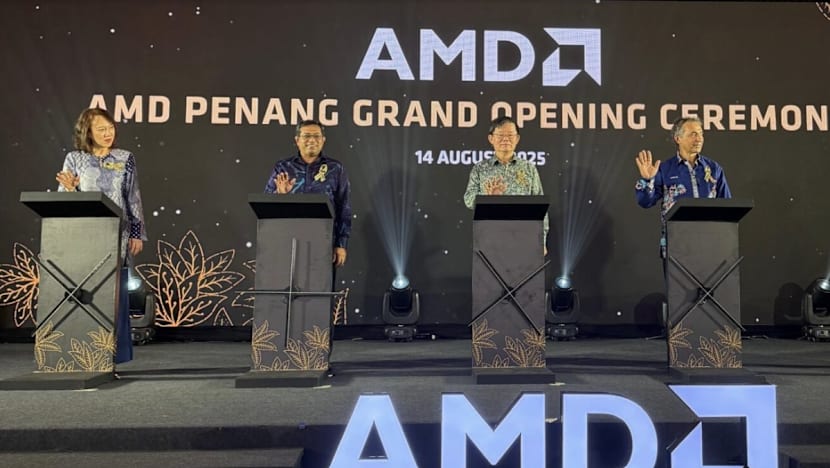 Penang Chief Minister Chow Kon Yeow (second from right) at the launch of AMD's new lab facility in Bayan Lepas, Penang on Aug 14, 2025. (Photo: Malaysian Investment Development Authority)
Penang Chief Minister Chow Kon Yeow (second from right) at the launch of AMD's new lab facility in Bayan Lepas, Penang on Aug 14, 2025. (Photo: Malaysian Investment Development Authority)
Meanwhile, Penang chief minister Chow told CNA that the state is also working to attract investments from Chinese firms.
He said that while initial inquiries were predominantly in low-value manufacturing, recent trends show growing interest in high-value industries such as semiconductor equipment, advanced materials, automation, and medical technology.
“Many of these companies are evaluating alternative locations, including Penang, as part of their strategy to enhance global competitiveness and optimise export routes to the US under a more favorable tariff,” he said.
According to local media reports, around 65 Chinese companies are operating in the state. Based on figures from 2024, China was Penang’s second largest trading partner, contributing 15.6 per cent of the state’s total exports.
A key milestone for the state was the groundbreaking of INV New Material Technologies, a subsidiary of China-based Shenzhen Senior Technology Material, for its first plant in Penang Technology Park in Bertam in end-2023.
However, Woo warned that there is a prevailing sentiment that the Malaysian federal government and the Penang state government are “not active enough” in promoting the growth of local companies in the burgeoning semiconductor space vis-a-vis their efforts in incentivising foreign MNCs.
He posited that local firms can play a bigger role as "subcontractors" for these MNCs by supplying parts and components.
“The federal government needs to be working with the state government to make available financing for Malaysian firms to undertake the investments necessary to upgrade and expand their production mix,” said Woo.
Malaysia Semiconductor Industry Association’s Wong echoed similar sentiments, outlining how more can be done to involve local firms in areas such as joint research and development initiatives so that they, too, can grow in the industry.
“Multinational (firms in Penang) have opened up and provided opportunities to local companies especially in automation, smart manufacturing and services to local players but much more still needs to be done,” said Wong.
WHAT CAN PENANG DO?
Analysts have also pointed out that there are warning signs that Penang could be severely impacted if and when the purported semiconductor sectoral tariffs are imposed.
Even before the tariffs are formally announced, financial advisory firms have turned cautious with their projections with TA Securities saying in a recent note that any substantial tariff on semiconductors would inevitably weigh on Malaysia, as the industry is deeply integrated into global supply chains.
"A steep tariff could undermine Malaysia's export performance, as higher tariffs would drive up production costs, part of which may be passed on to customers, ultimately weighing on demand," it said.
CIMB Securities also lowered Malaysia's technology sector 2025 to 2027 earnings forecasts by 7 per cent to 11 per cent, with narrowing margins partly linked to tariff implementation as one of the factors.
In a note released in August, the research house said that the US' potential implementation of a 100 per cent tariff on semiconductors would be negative for Malaysia’s technology sector.
It added that beyond demand risks, the uncertainty surrounding US tariff policy could delay new investments and expansion plans in Malaysia, especially for MNCs whose operations are closely tied to US end-demand.
“A prolonged overhang from potential tariffs may prompt US-based semiconductor and electronics firms to pause or reallocate capital expenditure,” it noted.
WHAT ELSE COULD IMPACT PENANG’S ATTRACTIVENESS AS INVESTMENT HUB?
Construction for some mega transportation projects in Penang has led to “nightmare traffic jams” that could impact the state’s competitiveness in attracting interest from investors, Penang Chief Minister Chow Kon Yeow said during a press conference in August.
He said that these projects included the light rail transit system, a public transport train network spanning across the city centre and suburbs, as well as the Juru-Sungai Dua Elevated Highway on the mainland.
Chow has urged the federal government to grant the state funding to implement “small-scale projects” that could help manage traffic conditions in certain locations, he reportedly said.
Transport economist Lim Mah Hui told CNA that the congestion problem due to these projects is “serious” and has caused standstill traffic in industrial areas during peak hours.
He posited that the government should implement a better bus network to disincentivise locals from driving private vehicles, and set aside a special lane for heavy vehicles, including those carrying products from factories.
“You must give them dedicated lanes during peak hours, right then they can move people faster to the offices and goods can be transported (more efficiently),” said Lim.
Collapse Expand
There has also been gloomy sentiment from industry players in Penang.
In April after Trump announced the “Liberation Day” tariffs, InvestPenang voiced urgent concerns over the initial tariff rate of 24 per cent imposed on Malaysia and warned of an “immediate impact” on exporters. That reciprocal tariff has since been reduced to 19 per cent.
In May, a survey done by the Malaysia semiconductor industry association stated that 65 per cent of its respondents anticipate a negative impact on the electrical and electronics industry over the next year due to US policies and tariffs.
Lastly, there have been signs of MNCs pausing investment and choosing to adopt a wait-and-see approach instead.
One clear example is Intel, with the chip giant reportedly said to have partially paused its new chip-packaging and testing project in Penang, part of the US$7 billion investment the American firm announced in 2021.
Reports said that the move was made amid cash flow issues that led Intel to suspend dividend payments and initiate job cuts across its operations globally.
In February, after Trump’s inauguration, local new outlet The Star published a column by a technology observer saying that the Intel Penang expansion project was “officially coming to an indefinite hold with no re-initiation in view” as engineers were reportedly redeployed.
Chow - the chief minister - was also quoted in June as saying that InvestPenang was seeking clarity from Intel on its plans for the near-completed Penang facility.
The economist Woo told CNA that these developments indicate that Penang is still vulnerable to US tariff policy, and he posited that sectoral semiconductor tariffs of “80 per cent and above” will “lower capital expenditure from MNCs” in the state.
However, he warned that the move might be counter-productive for the US because it would be “effectively pushing Malaysia closer to tighter economic integration with China”.
“In other words, the high tariff is allowing China's sphere of influence to be bigger than America. So it's also undermining the geostrategic competition that the US is engaging with China,” said Woo.
In anticipation of these tariffs being announced, experts said that Penang - and by extension Malaysia - as well as other Southeast Asian countries should consider diversifying their semiconductor exports to countries in the Comprehensive and Progressive Agreement for Trans-Pacific Partnership (CPTPP) and the Regional Comprehensive Economic Partnership (RCEP) to dilute US exposure.
CPTPP is a free trade agreement between 12 countries - Canada, Australia, Brunei, Chile, Japan, Malaysia, Mexico, New Zealand, Peru, Singapore, Vietnam and the United Kingdom.
Meanwhile the RCEP is the world's largest free trade agreement, encompassing 15 Asia-Pacific countries including the 10 ASEAN member states as well as China, Japan, South Korea, Australia, and New Zealand.
“If Malaysia (and other countries) turn to other trade partners …. It will be akin to the US shooting itself in the foot,” said Woo.
He added that Malaysian authorities may also negotiate for semiconductor chips exported from Penang and other parts of the country to be exempted from the semiconductor tariffs, given that US companies based in Penang would also suffer major losses.
“A high sectoral tariff would (also) certainly be very costly to the Americans and it doesn’t achieve their goals of preventing technological diffusion to China,” he said.

